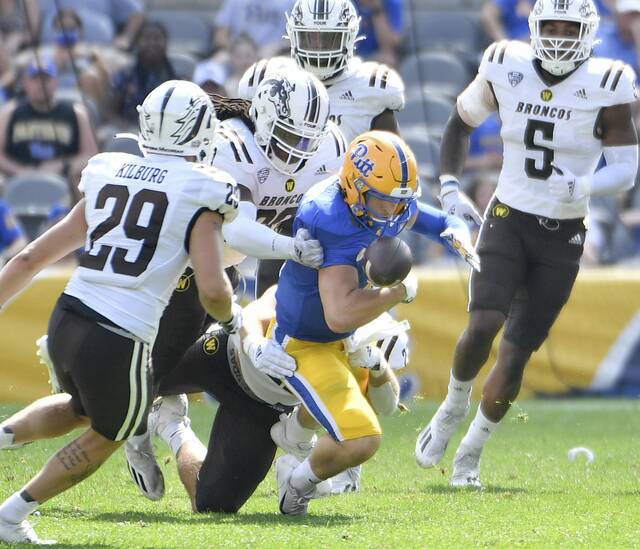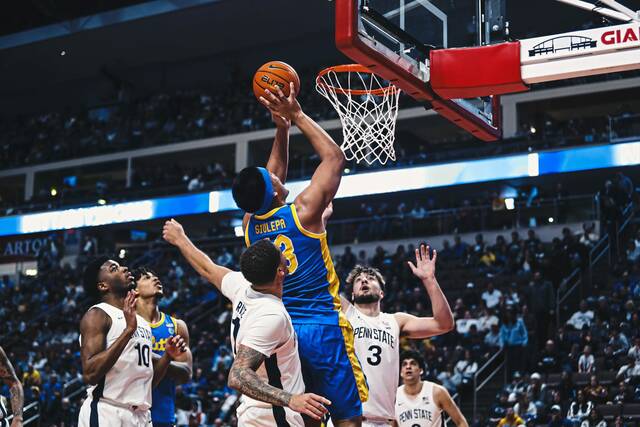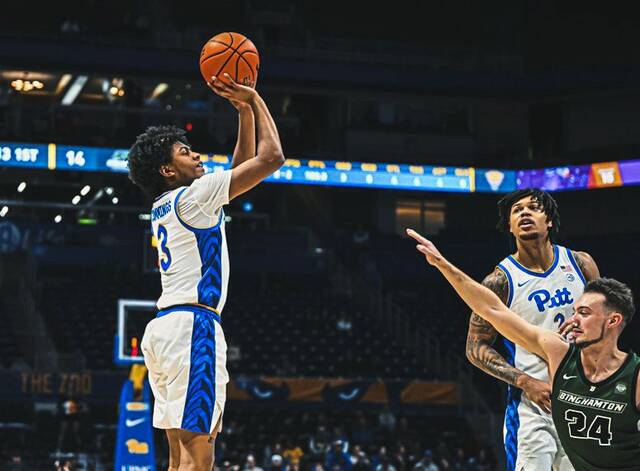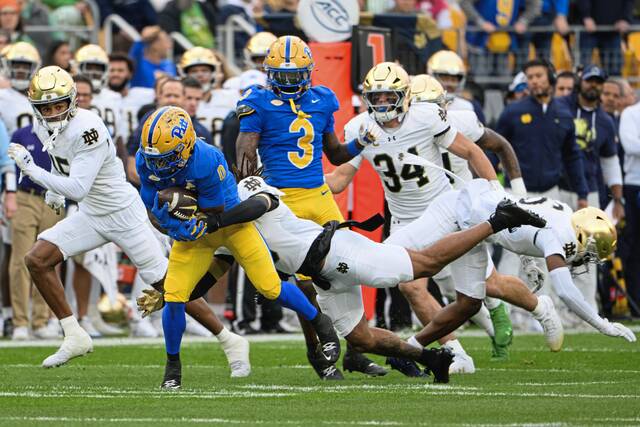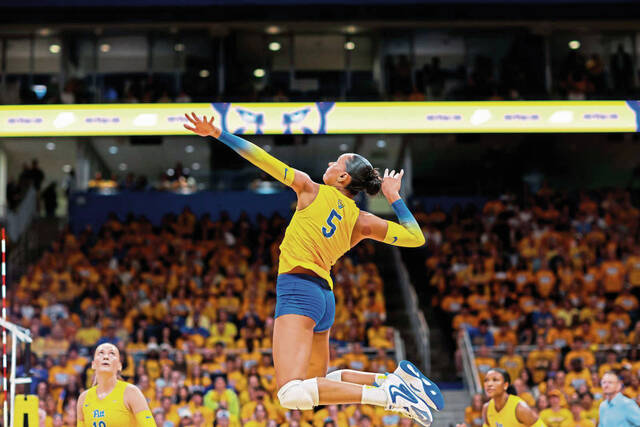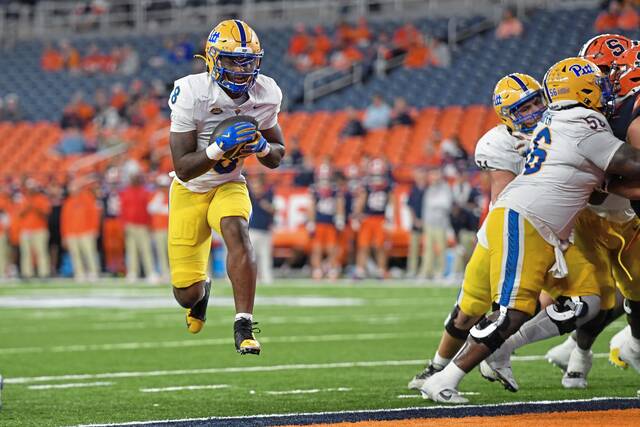Football teams constantly seek improved efficiency in everything they do.
Defenses are asked to hold the opposition to three downs and a punt.
Offenses are asked to score as quickly and as often as possible.
Makes sense, right?
But Western Michigan last week accepted a trade that appeared to be in Pitt’s favor — allowing a Panthers touchdown but getting possession of the ball in return — and turned it into an upset victory.
Was Pitt scoring too fast?
Pitt scored six touchdowns, but its time of possession on three of the drives was less than 43 seconds (10, 40 and 42). The longest was 3 minutes, 7 seconds.
Combined with three turnovers (two lost fumbles and an interception) and a defense that allowed Western Michigan to convert eight third or fourth downs, Pitt held the ball for 19:45 of 60 minutes, only 5:41 in the final, decisive quarter.
“Weird game where we scored quickly and needed to get the ball back and we didn’t,” coach Pat Narduzzi said.
Scoring too fast sounds absurd. Make no mistake: Narduzzi will take the points every time.
Yet, he remembers when a college offensive coordinator was chided for scoring too fast. And Narduzzi is related to the coach who did the chiding.
“Gene DeFilippo (later the athletic director at Villanova and Boston College) was my dad’s (Bill Narduzzi’s) offensive coordinator (at Youngstown State),” Narduzzi said Thursday during his chat with reporters.
“They played Delaware at home in a shootout (in 1979). We lost the game.”
Narduzzi said his dad told DeFilippo, “Don’t score so fast.”
“Delaware got the last possession and went down and won the game 51-45.”
Narduzzi assured reporters he has no such message for Pitt offensive coordinator Mark Whipple.
“I want to score. I don’t care how fast or how slow it is, just get in the end zone,” Narduzzi said.
And Pitt has been scoring with regularity this season.
The Panthers are averaging 44.3 points per game — actually, under quarterback Kenny Pickett’s goal of 50 — and are ranked ninth in the nation, tied with Army.
Pitt has done it largely through the air — often the quickest way to score — and is ranked sixth in the nation with an average of 363.7 aerial yards per game. Only Virginia, No. 2 at 438.3, is throwing for more yards per game than Pitt among the Power 5 schools.
Which makes turnovers so damaging. Taking the ball out of Pickett’s hands — actually, he played a part in both lost fumbles — is the worst thing Pitt can do.
But Pitt has not assembled a balanced offense. The Panthers are averaging only 131.1 yards per game on the ground, 95th in the nation.
“All it takes is one guy not to block his guy,” he said. “You have to all be in sync together, and you can’t turn a guy loose. The key is to get a hat on a hat, get your blocks. It takes 11.”
Pickett has been Pitt’s leading rusher. He has gained most of his 115 yards after the defense spreads out while trying to cover receivers. One of those plays led to a turnover when Pickett fumbled at the end of a run; another ended when Pickett got kicked in the head.
Starting running back Vincent Davis is averaging only 2.9 yards per carry.
But Izzy Abanikanda, whose playing time was limited last week while he dealt with a minor illness, is expected to play a larger role in the gameplan Saturday against New Hampshire.
“Little surprised in the run game,” Narduzzi said. “Just have to get better at it and we will.”


